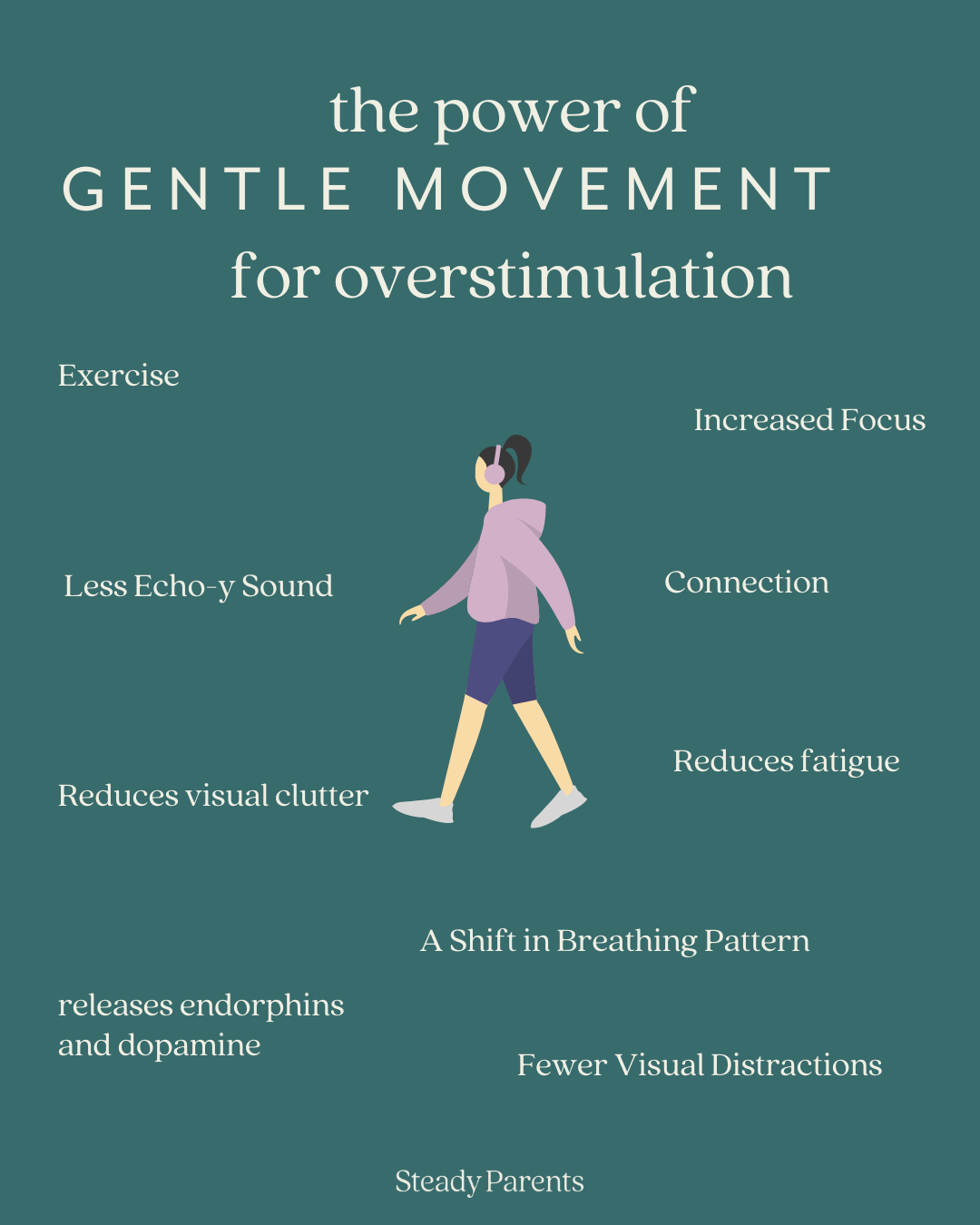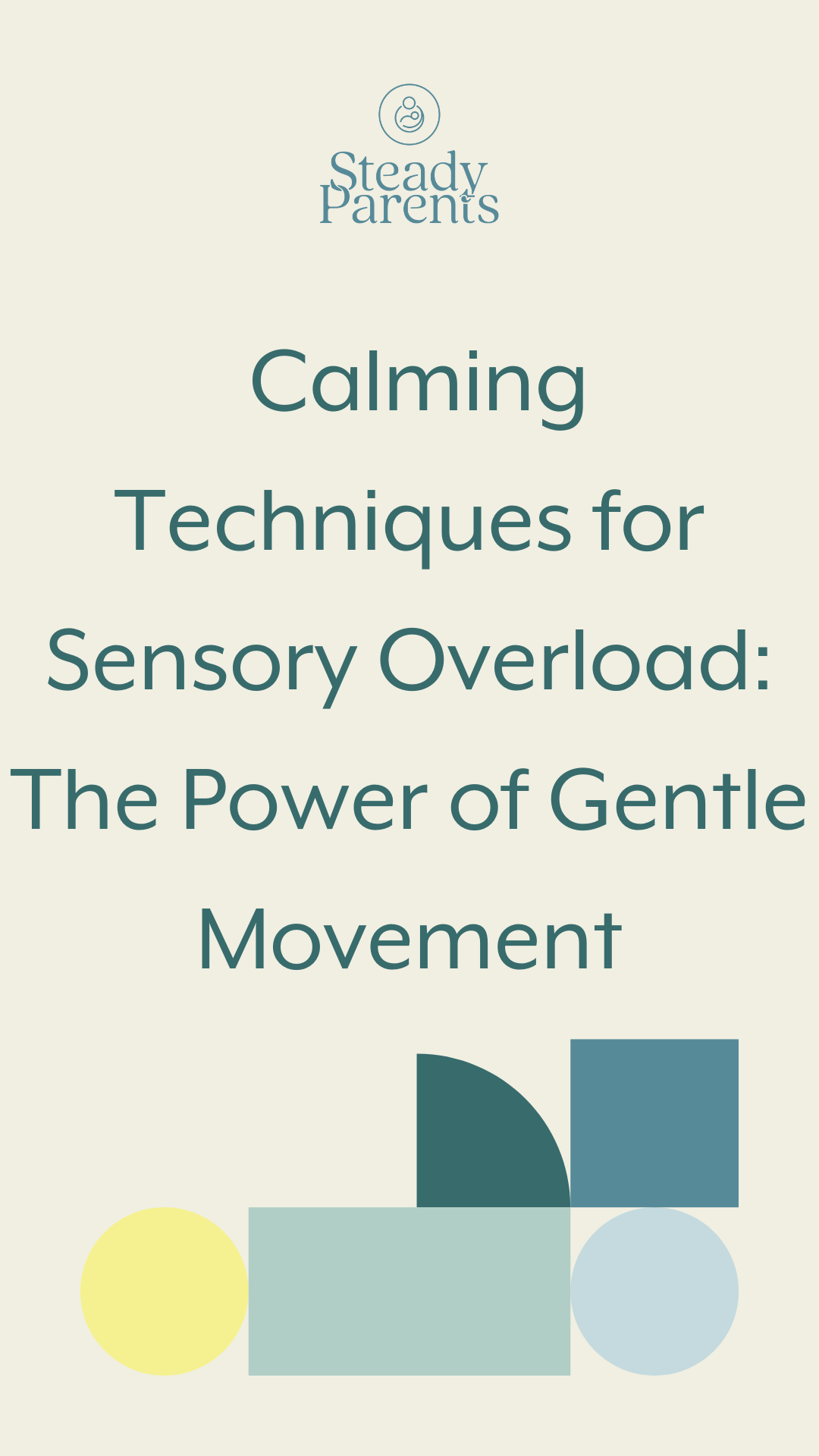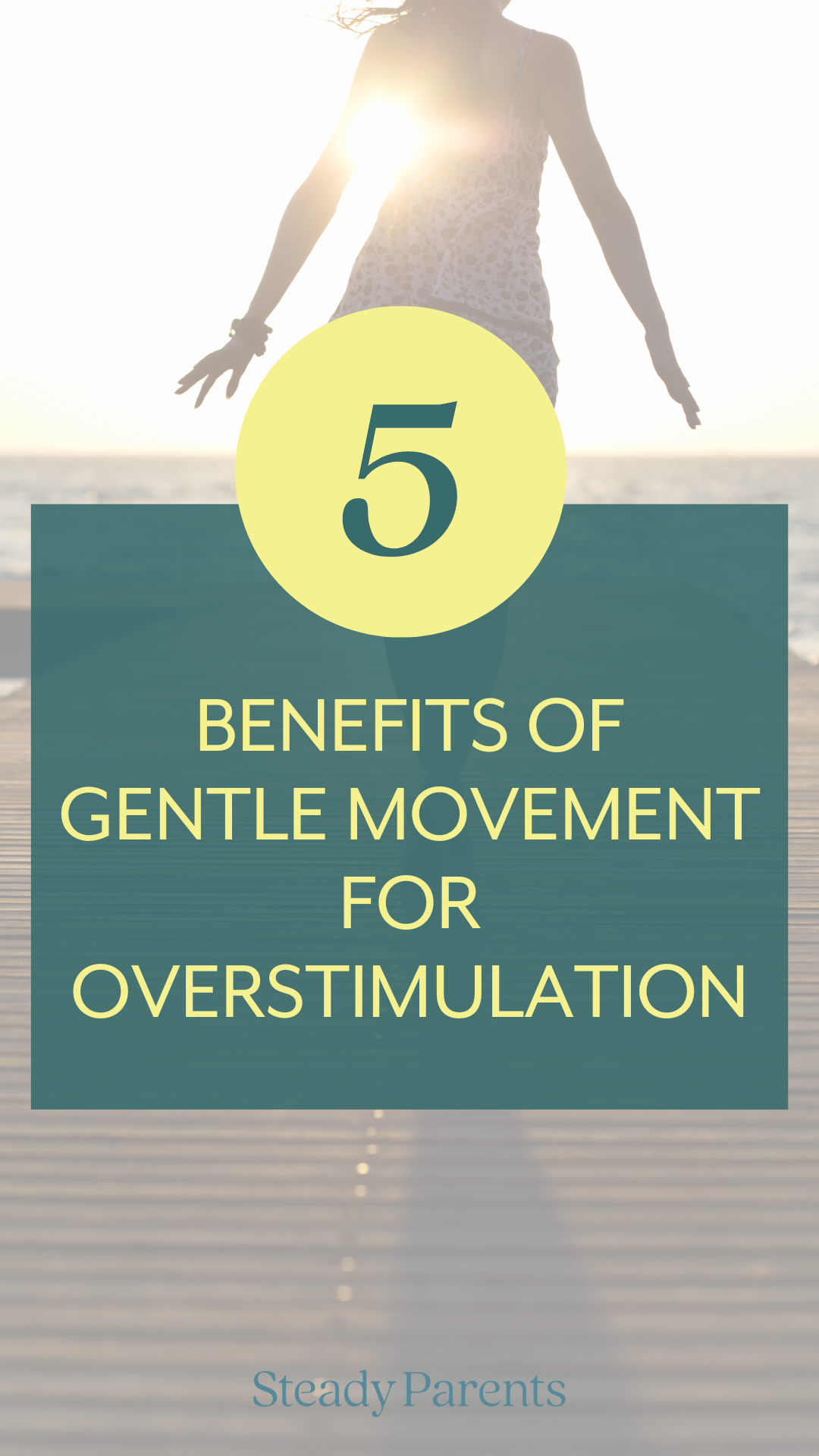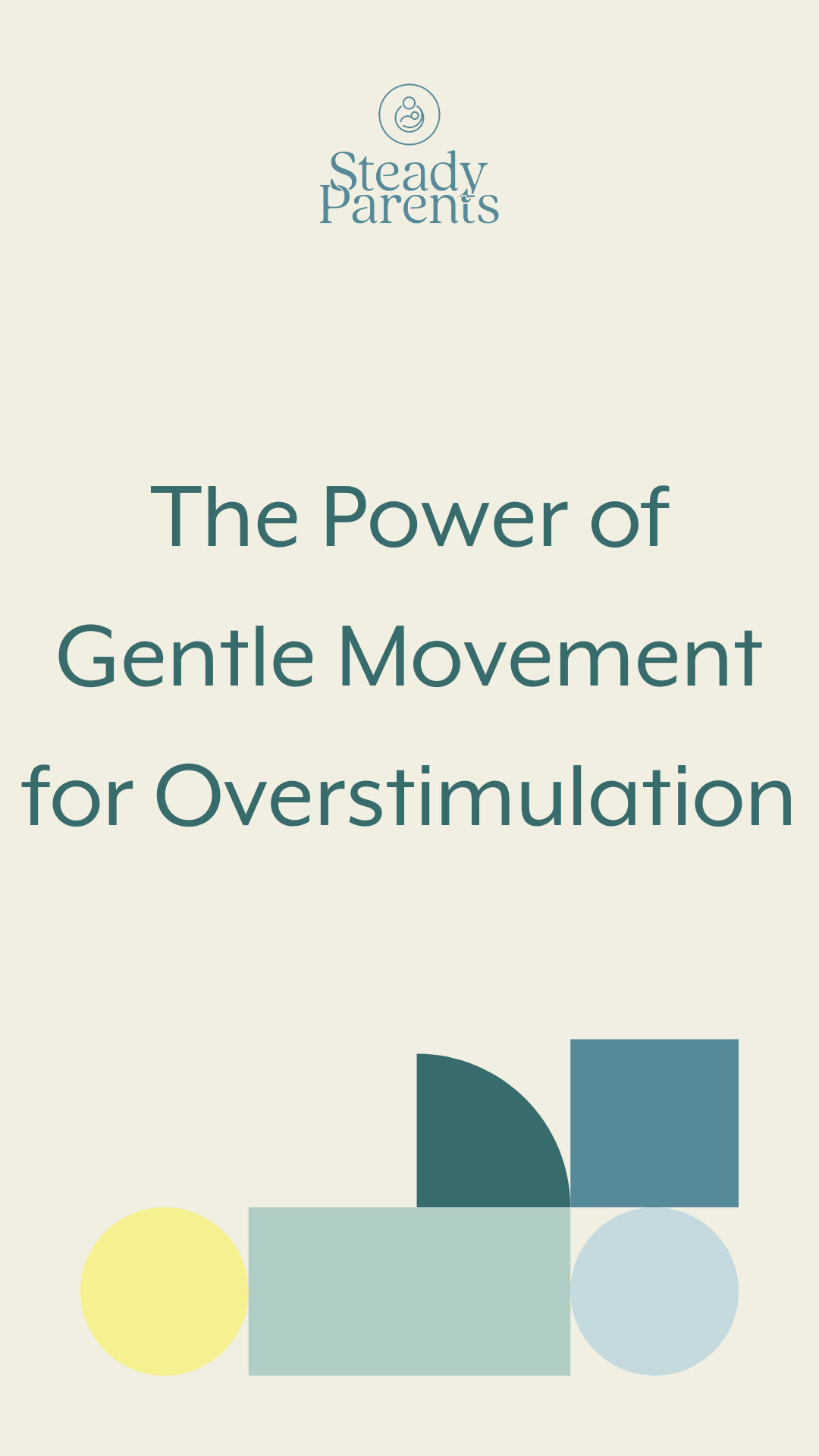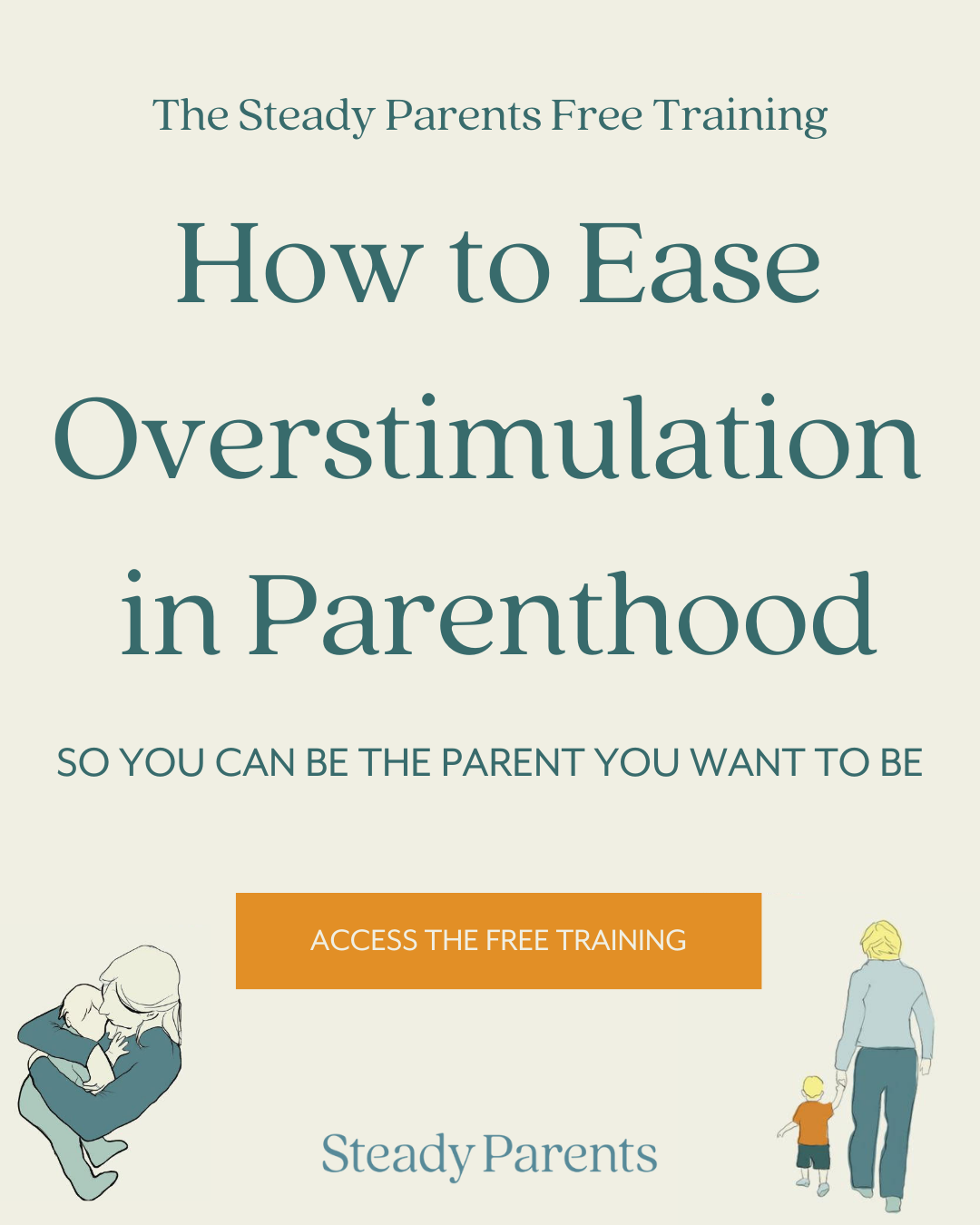Calming Techniques for Sensory Overload: The Power of Gentle Movement
Are you ever having a rough day, feeling overstimulated by your kids noise, mess, and general existence and you decide to pack everyone up to take them outside? Even on an overcast day, just switching up your environment and getting in some gentle movement can be a superb calming technique for sensory overload.
As an occupational therapist specializing in supporting parents, I want to explore the benefits of gentle movement in alleviating sensory overload and what you can do when getting outside isn’t possible. In this blog post, we'll delve into the significance of calming techniques and how incorporating gentle movement into your routine can make a meaningful difference in your parenting experience.
Understanding Sensory Overload
Sensory overload occurs when the brain receives more input than it can effectively process. This can be particularly challenging for parents who are navigating the demands of daily life while also caring for their children.
When you’re caring for young children, their constant demands and interruptions in the familiar environment of your home can send you over the edge. If you find yourself snapping at your kids more often than you’d like, it could be that your kids need to head outside to burn off some energy too!
When you're overstimulated, you need movement, fewer visual distractions, less echo-y sound, a shift in breathing pattern, and connection. Going outside for a gentle walk gives us all of these!
The Power of Gentle Movement
One effective way to address sensory overload is through gentle movement. Stepping outside and engaging in a slow, deliberate walk can be a transformative experience.
This simple act provides several key elements needed to combat overstimulation:
Movement for Overstimulation
Walking in a calm, deliberate manner provides the necessary physical activity to release built-up tension and stress. The rhythmic motion of walking has a soothing effect on the body and mind, promoting relaxation.
Exercise also releases endorphins and dopamine, the “feel good” hormones that boosts your mood and allows you to get a better grip on your emotions (Choosing Therapy).
Those with ADHD and impulsive behavior can also benefit from outdoor gentle movement because walking can take the place of more harmful pleasurable activities and can reduce fatigue and increase focus.
If you have to bring your kids with you on your walk, buckle them into the stroller or wagon. The extra strength involved in pushing or pulling more than your own body weight can be regulating for our nervous system!
Fewer Visual Distractions
Nature has a way of simplifying our surroundings. A gentle walk outside reduces the visual clutter that contributes to sensory overload.
Even if you don’t live in the most picturesque countryside, the calming influence of natural landscapes can create a serene environment for parents seeking respite.
Less Echo-y Sound
The open spaces outside typically have less echo and ambient noise compared to indoor environments. This reduction in auditory stimuli allows parents to experience a quieter and more peaceful atmosphere.
Just think- you won’t hear the laundry going, the stove vent whirring, or that song from Bluey in the background!
A Shift in Breathing Pattern
Walking encourages a natural shift in breathing patterns. Deep, intentional breaths have a calming effect on the nervous system, promoting relaxation and helping to regulate the body's response to stress.
Connection
The act of stepping outside fosters a sense of connection – not just with nature but also with oneself. Taking a moment to be present in the environment and connect with one's own body can be a powerful antidote to the chaos of sensory overload.
Being outside with your kids can also offer a way to connect with them on a deeper level. Sensory walks can allow your child to explore their imagination and connect with their senses as they explain to you what they are seeing, hearing, and touching.
What if a Walk Outside is More Overstimulating?
While a gentle walk is often a fantastic solution, certain challenges, such as navigating a bumpy hill, poorly-shoveled snow, or road noise, can make the experience even more overstimulating.
Or maybe your child insisted they bring their bike or scooter, yet halfway through the walk, they give up, leaving you to carry their transportation all the way back home. In such cases, it's essential to adapt the approach.
If the outdoors is still an option, stepping outside and engaging in simple, repetitive movements can still be beneficial. Walking in a circle, gentle stretching, and focused breathing offer an accessible and effective toolkit for parents.
I have also created a playlist specifically for parents in moments of overstimulation that you can find here: Playlist for Overstimulation.
Conclusion
In the journey of parenthood, finding moments of calm amidst the chaos is crucial for both physical and mental well-being. Gentle movement emerges as a powerful tool in the arsenal against sensory overload.
Whether it's a leisurely walk or a few intentional movements outdoors, incorporating these calming techniques into daily life can make a significant difference for parents seeking respite from the challenges of overstimulation.
So, lace up those shoes, step outside, and let the gentle movement guide you towards a more serene and balanced parenting experience.
For more sensory overload relieving strategies, be sure to check out my free training: How to Ease Overstimulation in Parenthood.



